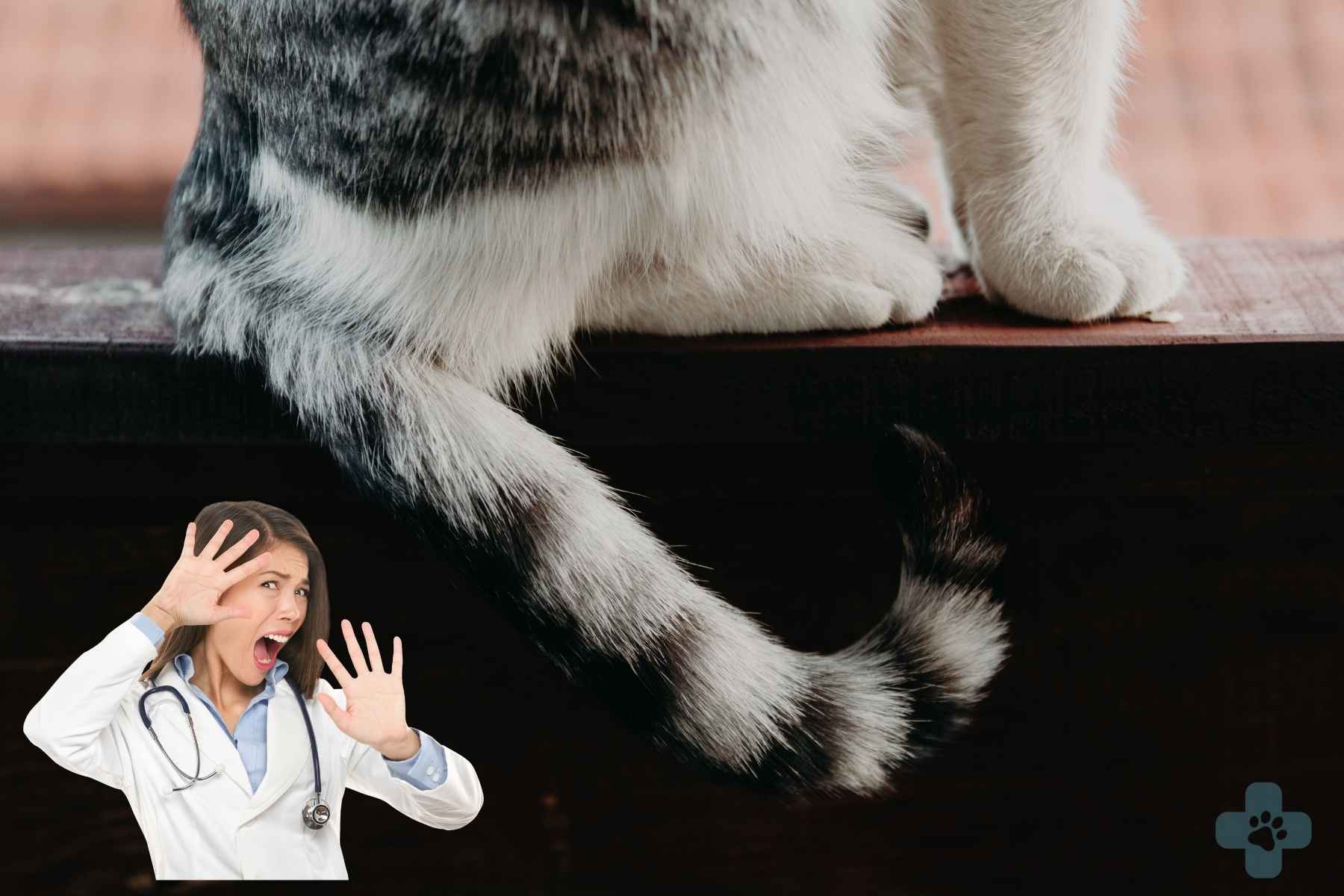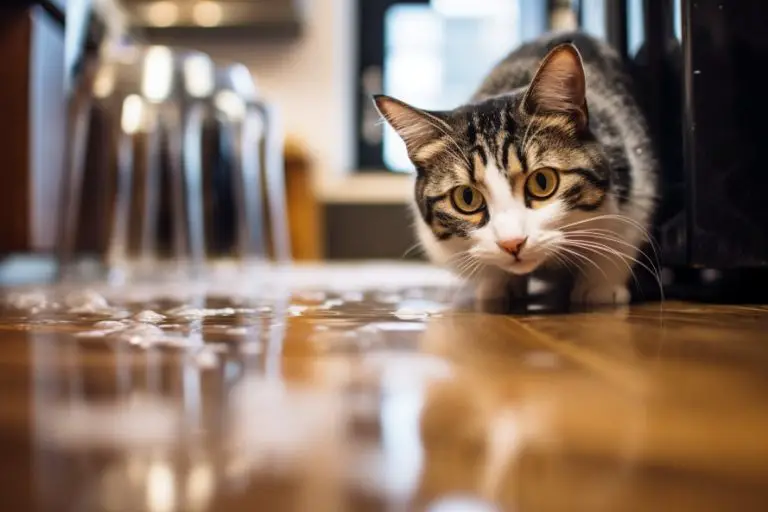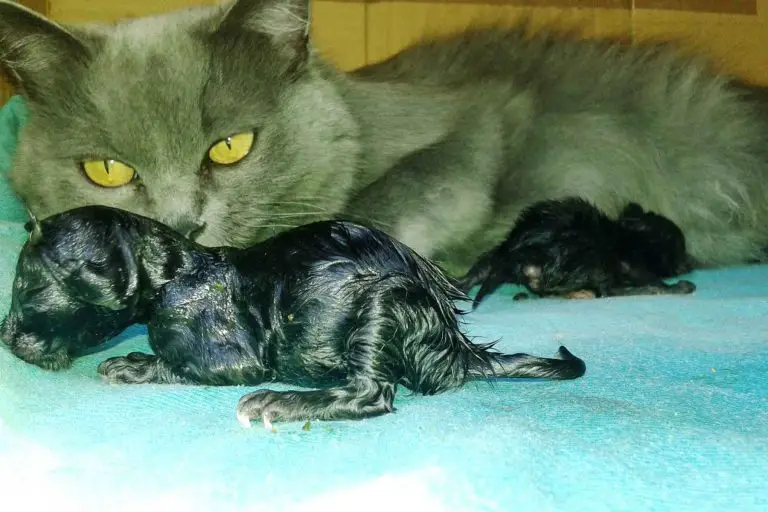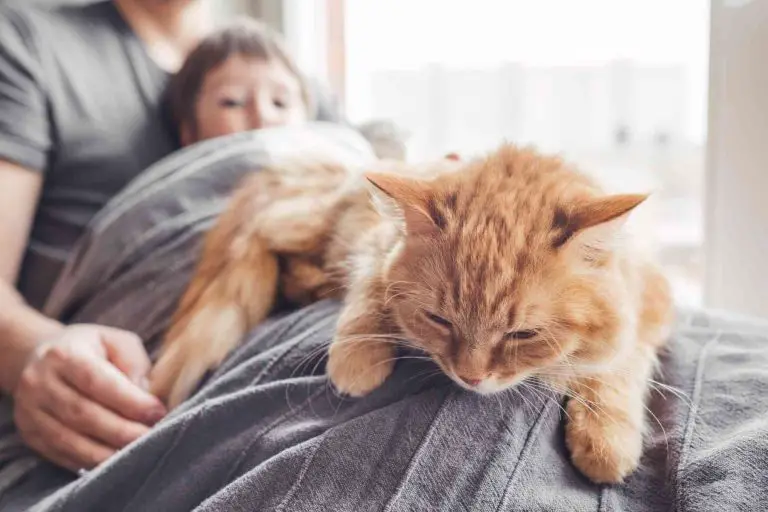Why Does My Cat Hit Me with Her Tail?

Cats are inscrutable and aloof― one minute they’re meowing and rubbing all over you, and the next they’re sat on the highest perch possible, scrutinizing you as though they suspect you’ve just committed a crime.
If you’ve ever been ‘floofed’ in the face by your cat’s tail like I have, you’ve probably wondered what drives them to flick their tail at you.
Cats may bop you with their tail as a greeting or sign of affection. Often, when cats want attention or food, they will nudge you and flick their tail at you as a way of signaling that they want something from you.
Stoic as they may seem at times, cats have plentiful ways to alert you to their needs or wants, and flicking their tail at you can have a lot of different meanings depending on the situation.
The rest of this article will help you to decipher just what exactly your cat’s little tail whack means.
Saying Hello
Well, isn’t that sweet? Most people are aware that a cat rubbing against your leg is a sign of affection and greeting but take note the next time your cat saunters over to greet you.
Is her tail up and slightly curved at the tip? Does her tail curl against your leg momentarily and linger?
This is her way of greeting you and demonstrating affection. It’s like saying, “Yes, you are my human. I will keep you.” Such tail-tapping behavior can be accompanied by meowing, purring, and head-nudging.
Showing Interest
If you have a cat who loves grocery bags, then you’ve probably experienced this phenomenon. You’re trying to put away the groceries, and your cat just insists on investigating those plastic bags.
In the process, she wafts her tail all around the place and makes putting anything away impossible. More likely than not, your cat is communicating interest in your activity. The bags are interesting to her, so she wants to be present and invested in what is happening.
Wrapping her tail around your legs or even wafting it in your face is communicating a desire for involvement.
Demanding Attention
There are no ifs and buts about it― cats are relentless when they want your attention. It doesn’t matter that she didn’t care for your affection 30 minutes earlier, she wants you to pet her now. Make no mistake, that incessant tail flicking is supposed to bother you.
If you respond to the demand for attention, your cat is even more likely to utilize hitting you with her tail whenever she deems necessary.
Asking to Play
Cats will flick you with their tails when they want to play. If your cat is bopping you with her tail, then focusing straight on an object of interest, she wants you to play with her.
If you have a toy box, your cat may go from pestering you with her tail to pacing back and forth near the toy box.
Such swishing of the tail is usually level to the ground and indicative of an energetic cat.
Cats often adopt a playful attitude when they want you to play with them, and your cat might rub against you or make vocalizations to accentuate their point.
The Thrill of the Hunt
One of the main reasons your cat is hitting you with her tail is excitement. Cats get excited about a lot of things― a piece of fluff floating around, a fly buzzing around the room, or even the humble twisty tie. When a cat is excited, their tails will wag erratically.
In this case, your cat probably doesn’t mean to hit you with her tail, but she is so laser focused on her target that she doesn’t even notice you there.
Cats adopt a hunched posture when they are excited and about to pounce at something and may wiggle their butt as they prepare to strike.
If you have two or more cats, you’ve quite likely seen this behavior. One cat is sauntering along, completely oblivious, while the cat in your lap starts waving her tail wildly and preparing to pounce.
Cats living in the same house often see each other as mock-prey and a good opportunity to practice their hunting skills. In this case, you might find yourself getting repeatedly thwacked in the face by your cat’s tail as they embrace the excitement of the chase.
Asking You to Move
“Well, look at that. You’re exactly where I want to be.” If your cat has a favorite spot, and you dare sit in it, you may be subjected to a swift scolding via tail flicking.
In general, cats use their paws and voice to indicate their displeasure that you’ve taken their nap spot, but some cats will flick their tails at you in an irritated manner to express their frustration.
Mealtime Blues
Cats are very obsessed with food, and they are very persistent in getting your attention to let you know when they should be fed. If this is the case, then you can also expect a lot of vocalizing and pacing to try to steer you towards where they’re typically fed.
A hungry cat will intentionally flick you with its tail to grab your attention and make you notice them. Standing on whatever you’re working on also comes with the territory with a hungry cat.
Forget about that project you were working on― it’s food time now. Cats will often try to get higher up (on the back of your chair most likely) to put themselves in your line of sight and waft their tail to demand food.
Fear and Anxiety
Cats scare pretty easily, so whenever you move furniture around or introduce a new object to the house, they’ll need to re-establish their territory by vetting it thoroughly for threats.
Depending on the kind of cat you have, they may cling to you if you’re entering somewhere new, keeping their tail touching your leg. This is their way of keeping tabs on where you are and how you are reacting to the situation.
Fearful cats often adopt a low-to-the-ground position and are wide-eyed with alert ears. Some cats, however, are more independent on others, so this kind of tail-touching is much less common.
Tail Slapping in Anger
Commonly called tail slapping, you should generally steer clear of a cat whose tail is swishing rapidly. This behavior indicates that your cat is preparing for a flight or flight instinct, and swatting you with their tail is cat speak for “back off.”
Aggressive cat behavior is often associated with hissing, growling and other vocalizations.
Ears back and eyes wide, an angry cat is ready to adapt to what they perceive to be a high-risk or high-stress situation in a moment, so if your cat is tail slapping, you should always give them plenty of space to cool down.
In general, if your cat refuses to come out of hiding, refuses to let you pet her, or growls often, there is an underlying aggression or behavior issue that needs to be addressed.
Irritation
Cats can get annoyed pretty easily. Especially in a household with multiple cats or a cat and dog, cats tend to express their irritation by flicking their tails at the target of their annoyance as a way of saying, “Hey, cut that out.”
Sometimes, when a cat just wants to relax, they take offense to anyone entering their personal space (I’m looking at you, dogs), and will express their irritation by wafting their tails around.
If your cat likes to lounge on the bed, and you just messed up the perfect balance by daring to lie down near them, you can probably expect them to let you know just how they feel with a few irritated tail flicks in your direction.
If you’re stroking your cat and their tail is tapping gently on the ground, consider that your cat probably isn’t in the mood for affection right now. Cats that don’t want attention will usually seclude themselves somewhere out of reach like a high shelf or tucked away in a cat bed.
Irritated cats may also shrink away from touch or pull their ears back when they’re annoyed. A cat who constantly hides and shies away from company is likely expressing their unhappiness with their home environment.
Conclusion
Cats are complex creatures, and they communicate a lot to us through their tail. Not only does their body and posture tell us a lot about how they are feeling, but the way they use their tail as well.
Learning how to interpret these gestures can help you determine just when your cat is in the mood for cuddles and when they are annoyed with you. A lot of these gestures can be understood better with context as well: Did you just come out from your morning shower?
Your cat is probably just giving you a morning hello. Is it that time of day again? Your cat’s probably hungry. Now that you know how to interpret your cat’s behavior, only one question remains: what is your cat trying to tell you this time?






